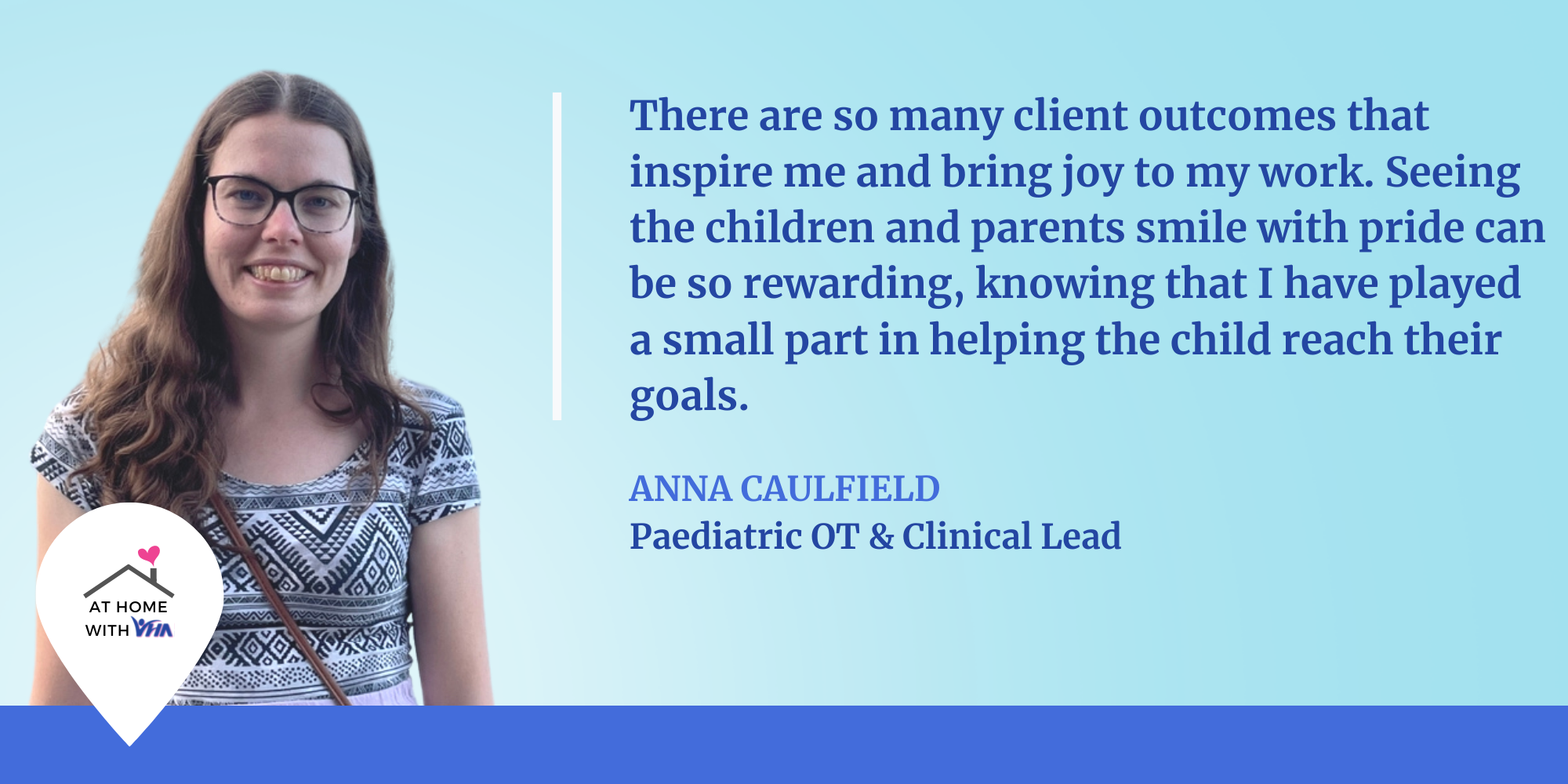At Home with VHA: Meet OT Anna Caulfield

At Home with VHA tells the stories of those who make up our workforce. In every role, VHA care providers and staff champion the needs of our clients and create possibilities for more independence. October is Occupational Therapy Month, so we’re recognizing some of the spectacular rehab therapists on our team. Meet Anna Caulfield, an Occupational Therapist and Clinical Lead on our team who provides care in the eastern regions of the Greater Toronto Area.
Why did you choose a career in Occupational Therapy?
Anna: When I first heard about Occupational Therapy, I was immediately drawn to the holistic nature of the profession, where all aspects of a person (physical, cognitive, emotional, social, and sensory) and the environment are considered. The focus is on enabling and empowering individuals to engage in the activities that are important and meaningful to them, as well as help individuals develop or regain independence. This desire to pursue a career in occupational therapy wasn’t solidified until I completed a practicum at the Children’s Hospital of Eastern Ontario (CHEO) during my undergraduate degree, where I spent many hours shadowing and working alongside incredible Paediatric OTs.
What is your favourite thing about being an OT in community care?
Anna: There are many things that I love about being an OT in community care. My two favourite things would probably be the fact that every day is different since we have such a wide scope in the community, especially in paediatrics. I also love working in the client’s natural environment, as this is where they are most comfortable. There is a certain level of trust and connection when a family welcomes you into their home. By working in the client’s natural environment, I am able to see the client’s habits and identify any supports and barriers in their environment that may affect their engagement and performance in activities. My job requires that I get creative, think on my feet, and problem-solve how to use what’s available in the environment to help achieve the client and family’s goals.
What do you think is the biggest impact of your work?
Anna: I think my biggest impact as an OT in the community is supporting clients and families achieve what is meaningful for them. Working in paediatrics, I often find that I am one of the first professionals supporting the child and family; as such, I often help connect the family with other resources and supports available in the community that would be beneficial for their child’s development. As the paediatric clinical lead for the Central East team, I believe that I also have a big impact in supporting our team of incredible paediatric occupational therapists, guiding them on how to best support their clients. I am also the sole paediatric ADP authorizer on the Central East team, which allows me to assist with the seating and mobility needs for the clients in our region, which I believe has a valuable impact.
Are there any client outcomes that have been particularly memorable to you?
Anna: There are many client outcomes that inspire me and bring joy to my work. Seeing the children and parents smile with pride can be so rewarding, knowing that I have played a small part in helping the child get there. Some examples include:
- When a child achieves a developmental milestone for the first time, whether it’s rolling, crawling, walking, releasing a toy, independently spoon-feeding, etc.
- When a child with a limited food repertoire tries a new food for the first time.
- When parents and teachers have a better understanding of the child’s sensory profile, and are able to help the child meet their sensory needs.
One recent client outcome that was particularly memorable was helping a grade 4 student tie his shoelaces independently for the first time. This was a really important activity for the client, and was immediately identified as a goal for service. He had not yet been successful at tying his shoelaces independently, despite multiple attempts, which evoked some discouragement. After one session of breaking down the task into small, achievable steps, attempting various techniques to determine what worked best for the client, and adapting how I taught the task to best meet the client’s learning needs, the client was able to consistently and independently tie his shoelaces. He was so proud, and couldn’t wait to get back to the class to show his teacher, educational assistant, and friends how he can tie his shoelaces independently; the big smile remained on his face for the rest of the day! Although it may seem like a small task, this activity was so meaningful and important for the client, and meant everything.
